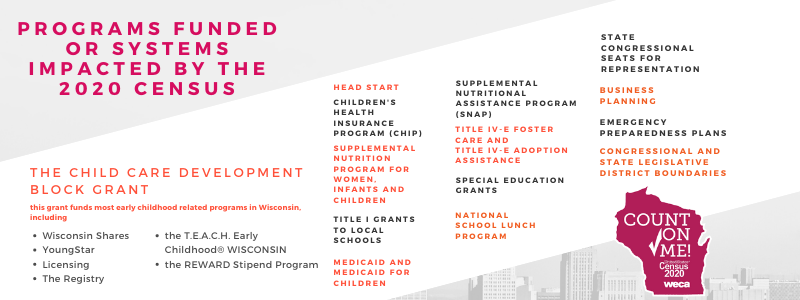by Amy Schuster, Director of the REWARD Stipend Program
As you probably know, in a couple weeks, all households will begin receiving invitations to complete the 2020 Census. You are going to play a huge role in the census, because you work with populations that can be significantly undercounted – families, children, and infants. With so much research telling us that community resources impact individual life outcomes and census counts directly impacting resources that communities receive, this count is critical. This post this is the first of a 6-part series to get you all the info you will need to be ready for the census. The Census only happens every 10 years, so we must get it right!
Why do we do the census?
The Census is mandated by the Constitution and states that the country conduct a count of its population once every 10 years to ensure adequate representation and funding based on population data. The 2020 Census counts the population in all 50 states, the District of Columbia, and five U.S. territories (Puerto Rico, American Samoa, the Commonwealth of the Northern Mariana Islands, Guam, and the U.S. Virgin Islands).
What is the information used for?
The funding for more than 300 federal programs is based on Census-derived data. This includes programs that directly affect young children, families, and their child care providers here in Wisconsin, and the stakes are huge! Here are some programs funded by or systems impacted by census data:

As you can see, this year’s Census will have huge impact for years to come. We hope you will join WECA by saying, “Count On Me!”
What can I expect from this series?
Here is a preview of the topics we will be covering in the upcoming weeks. If you have questions that you don’t see addressed here, email aschuster@wisconsinearlychildhood.org and we’ll try to incorporate them or contact you directly!
Part 2
Census Basics – how and what will be asked – Sample Census forms included.
Part 3
FAQs & Myths, including
- How will my info be used, and how secure will my info be?
- Citizenship questions and concerns
Part 4
Focus on undercounting – what it is and why it’s important to count every single adult and child and infant
Part 5
Activities and materials that child care programs can use with parents, children, and others in their community
Part 6
Summary and call to action! – blurb for their newsletter or social media
